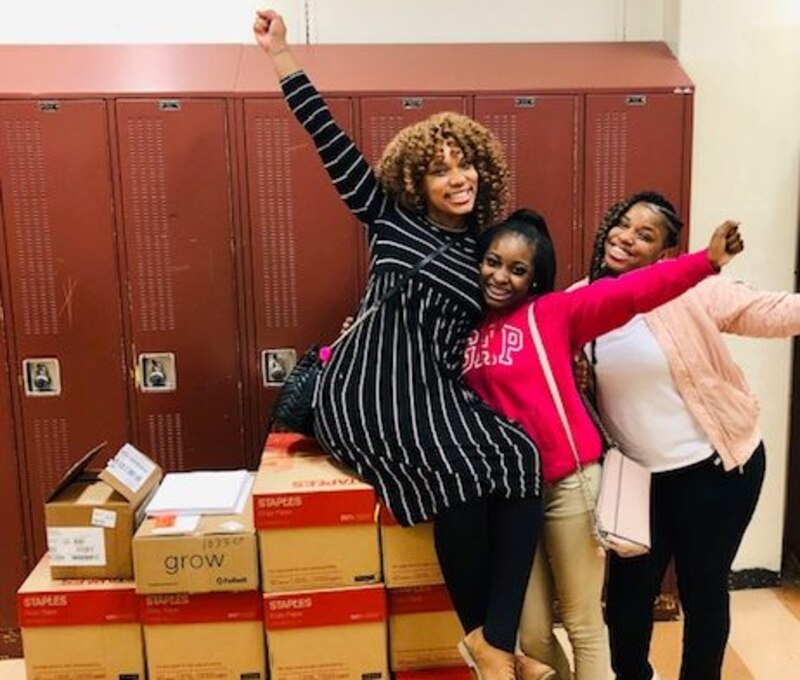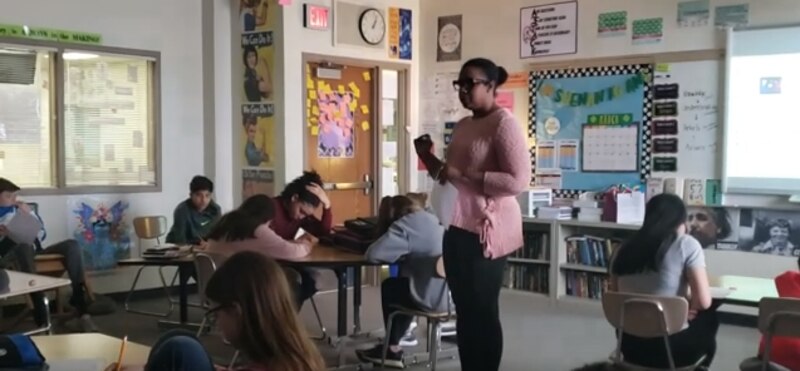In one Chicago teacher recruitment video posted on YouTube, children applaud and black and brown teachers are shown enthusiastically working side-by-side with children in local classrooms. A soothing voice-over breaks in: “We think you’re making a great decision, and we’re here to help.”
Amid a teacher shortage, recruiting an educator in Illinois has become increasingly difficult. Chicago is pulling out all the stops with a series of videos promoting a teaching residency program that offers tuition discounts for apprenticeships in high-need schools.
Chicago schools chief Janice Jackson has put priority on boosting teacher diversity, which means not only recruiting more teachers of color, but keeping them in the classroom after the initial years.
What advice would teachers of color give to new recruits? Chalkbeat asked three teachers, who contributed to a report on educator diversity by the advocacy group TeachPlus.
The report describes an “invisible tax” on teachers of color that often goes unrecognized inside school buildings, from shouldering a greater responsibility for quelling discipline problems to serving on so-called equity councils. Among the group’s recommendations: clearer paths to leadership roles and compensation for extra work outside of the classroom.
Dominicca Washington, 12th grade English, Julian High School. Washington has eight years of classroom experience.

During my first year as a teacher, I taught fourth grade. My class was comprised of students from adverse familial circumstances and students with cognitive, behavioral and emotional disabilities without a co-teacher for support. I found myself taking on the emotional tax of every student I encountered.
One day, I went to my assistant principal’s office in tears because I felt like I was doing everything except for my job of preparing my kids for fifth grade.
Her response was, “Dominicca, if you change one life, you’ve done your job as an educator. Teaching is the job that is never complete; you will start the year with a million things to do and end the year with more things to do, some of which will never be done. You have to trust yourself enough to know that you did what was best for our kids.”
One thing that I want to tell new teachers of color is to prioritize their mental and emotional stability. Teachers of color carry the burden of internalizing the experiences of students of color because we identify with their struggle against society. There have been many nights that I have come home crying, stressed and unable to fully give to my family due to that internalization.
While I do not want teachers of color to desensitize themselves to the experiences of the students that they serve, I do want them to prioritize their own mental health to enable themselves to serve their students at maximum capacity.
Keisha Rembert, eighth-grade history and English, Clifford Crone Middle School in Indian Prairie School District 204. Rembert has 17 years of classroom experience.

I wish I could tell you the job is easy; it is not, especially for educators of color. I find myself constantly feeling the need to prove myself versus being myself. On curriculum nights/open house night, I lead with my credentials while my peers do not because I find my work does not speak for itself — even though it should.
I can be on a number of boards, present at numerous conferences and receive many accolades, and yet I must assert my own value — all the while wondering what my colleague meant by that comment they made in the copy room or why my administrator renders my accomplishments invisible while elevating lesser accomplishments of my white colleagues, but still expects me to lead diversity initiatives (ones that often lack structure, support or substance).
The work is demanding — especially when I am asked to be a mentor, disciplinarian, culture expert and translator — but connecting with people who are working under the same circumstances is uplifting. If, together, teachers of color can share sage advice and resources and affirm that our work is valuable and necessary, we will persist to be who we ultimately want our students to become.
It can be really tiring trying to negotiate so much, but the reward comes when former students come back to visit me and share how the discussions we had — and the texts they read — still resonate.
Don’t let the noise of what others say about teaching drown out the greatness of one of the most important professions. I remember wondering if I was making the right choice, but I can assure you that I have no regrets. Every day begins anew. Every day is impactful. Students of color need your expertise and mentorship. Your presence in the classroom could mean the difference between a student graduating, coming to school and achieving their best.
And I need you: more teachers of color in my building, district, at national conferences to inspire and motivate me. Take heart that this profession will bring you unspeakable joy and by bringing your passion and talent into the classroom, the entire educational system is elevated.
Violeta Xochitl Cerna-Prado, ninth-grade multicultural studies, UIC College Prep. Cerna-Prado has four years of classroom experience.
I would tell new teachers to look for their own purpose when they are in the classroom and understand that their own identity plays a huge role. Less than three months into my first year teaching, Chicago was shaken up by the release of a video depicting the unjust and brutal murder of Laquan McDonald. On the night of Nov. 24, 2015, I walked hand in hand with over 500 Chicagoans to honor Laquan McDonald’s life and holding true a promise to our youth.
As I chanted and protested I couldn’t help but think about my students. About 80% at that time were young black men and had come from a similar upbringing. These were our children. This was the first time in a very long time that I held just as much hate for my city as love, and at this moment I vowed to use education as my form of activism.
My biggest piece of advice: You’re not in the classroom to save, you’re there to teach. To teach about injustice and about those that have come before us in an attempt to make it right. To teach peaceful protest. To teach self-love. It was helpful for me to see teaching as a form of social justice and organizing and to think about how I can use my time in the classroom as a form of activism.

